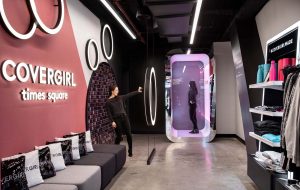KFC The Original Showman
From Entitlement to Groundbreaking: How Smart Architectural Planning Reduces Risk and Unlocks Value
The multifamily development landscape is fraught with challenges, ranging from regulatory hurdles and community opposition to delays that can threaten project timelines and budgets. In this complex environment, developers face mounting pressure to mitigate risk while delivering value to investors and tenants. Strategic architectural planning, especially when initiated during the entitlement phase, offers a powerful solution. By proactively addressing challenges and aligning design with market needs, developers can unlock long-term value and ensure successful outcomes.
NELSON Worldwide, a leader in innovative architectural planning, has consistently delivered transformative results for multifamily projects. This white paper explores how smart architectural planning, demonstrated through projects such as The Harbor Cohasset, Midtown Crossing at Turner Park, and Essex Property Trust, reduces risks and maximizes value from entitlement to groundbreaking.
Section 1: The Importance of Strategic Planning in the Entitlement Phase
The entitlement phase is the foundation of any successful multifamily development. During this stage, navigating zoning regulations, addressing community concerns, and obtaining necessary approvals are critical to moving a project forward. Engaging architects early in the process enables developers to identify potential roadblocks and address them proactively.
Case Study: Midtown Crossing at Turner Park Midtown Crossing at Turner Park exemplifies the power of early stakeholder collaboration. NELSON Worldwide worked closely with local communities and regulatory bodies during the entitlement phase to identify and address concerns about density, parking, and mixed-use functionality. This proactive approach expedited the approval process, reduced opposition, and fostered goodwill among stakeholders. The resulting project seamlessly integrates residential and commercial spaces, creating a vibrant, year-round destination.
Key Takeaway: Early architectural engagement can streamline entitlement processes, minimize delays, and foster community support, positioning projects for long-term success.
How to Ensure Success in the Entitlement Phase
- Conduct Comprehensive Site Analysis: Evaluate zoning, environmental, and infrastructure constraints to uncover potential hurdles.
- Engage with Local Stakeholders Early: Build relationships with community leaders, neighbors, and local officials to anticipate and address concerns.
- Review and Align with Local Regulations: Ensure the project’s plans comply with zoning codes, land use requirements, and environmental regulations.
- Anticipate Variance or Rezoning Needs: Assess whether adjustments to zoning or land use are required and prepare accordingly.
- Plan for Infrastructure Upgrades: Coordinate with local utilities and public services to address any necessary improvements.
- Address Environmental Impact: Conduct studies and plan mitigation strategies for any environmental challenges.
- Foster Transparency and Communication: Maintain open dialogue with regulatory bodies to build trust and minimize misunderstandings.

Section 2: Reducing Risk Through Design Efficiency
Smart design is integral to mitigating risks that can arise during development. By tailoring space optimization to the unique needs of each project, ensuring thorough compliance with local regulations through proactive reviews, and designing with tenant-driven functionality in mind, architects can effectively address developer concerns before they escalate into costly challenges.
Maximizing Design Efficiency
- Optimize Building Layouts: Focus on maximizing rentable or usable space while maintaining functionality and accessibility.
- Plan for Regulatory Compliance: Collaborate with architects who understand local building codes and regulations to avoid costly delays.
- Incorporate Flexibility: Design spaces that can adapt to future market trends or tenant needs, such as convertible units or multi-use areas.
- Leverage Technology: Use Building Information Modeling (BIM) to identify potential design conflicts early and improve construction accuracy.
- Focus on Market-Driven Design: Integrate features that cater to tenant preferences, such as energy-efficient systems or premium amenities.
Case Study: The Harbor Cohasset At The Harbor Cohasset, NELSON Worldwide implemented innovative space optimization strategies to maximize the number of rentable units while maintaining high tenant satisfaction. This approach not only enhanced the project’s profitability but also ensured compliance with local zoning laws, resulting in a project that met market demands and achieved high occupancy rates post-completion.
Key Takeaway: Design efficiency reduces costly risks while enhancing functionality and tenant satisfaction, ensuring the project’s financial success.

Section 3: Unlocking Value with Sustainable and Adaptive Design
In an era where sustainability is both a market and social imperative, adaptive reuse and eco-friendly designs are key differentiators. Developers who incorporate sustainability into their projects can reduce long-term operational costs, attract tenants, and enhance property marketability.
Incorporating sustainable and adaptive design strategies into multifamily developments offers significant long-term benefits for developers, tenants, and communities alike. By leveraging energy-efficient systems such as renewable energy sources, smart building technologies, and high-performance HVAC systems, developers can significantly reduce operational costs while meeting the growing demand for eco-conscious living. Similarly, the use of sustainable materials—including recycled, locally sourced, or low-carbon options—not only minimizes environmental impact but also appeals to environmentally aware tenants who prioritize green building features.
Adaptive reuse projects further enhance sustainability by repurposing existing structures, which reduces construction waste and preserves the historical and cultural fabric of communities. Developers can also optimize water efficiency with systems like low-flow fixtures, rainwater harvesting, and greywater recycling, ensuring resources are conserved. Additionally, designing for long-term flexibility—with modular or adaptable spaces—allows properties to evolve alongside market trends and tenant demands, providing resilience and maintaining their value over time.
Case Study 1: Essex Property Trust NELSON Worldwide partnered with Essex Property Trust to transform an existing property into a modern, sustainable multifamily development. By integrating eco-friendly materials, energy-efficient systems, and preserving historical elements, the project delivered significant operational savings and increased tenant retention. This example underscores the dual benefits of sustainability—environmental responsibility and financial performance.
Key Takeaway: Sustainable and adaptive design creates lasting value by reducing costs, preserving resources, and boosting marketability.
Case Study 2 : The Residences at Two Liberty NELSON Worldwide transformed the top ten floors of the iconic Two Liberty Place office tower in Philadelphia into luxury condominiums, creating contemporary residences that now rank as the highest residential floors in the city. This adaptive reuse project required extensive reconfiguration of mechanical, electrical, and plumbing infrastructure to accommodate the new residential layouts. The design emphasizes timeless sophistication and luxury, departing from the classical interiors that characterize much of Philadelphia, and instead offering a style reminiscent of Manhattan.
Key Takeaway: Adaptive reuse projects like The Residences at Two Liberty demonstrate how sustainable and innovative design can create high-value residential spaces within existing urban structures, reducing environmental impact while meeting market demand

Section 4: Bridging the Gap Between Planning and Groundbreaking
The transition from planning to groundbreaking is where many multifamily projects encounter delays and cost overruns. By prioritizing collaboration and clear communication, developers can ensure this critical phase proceeds smoothly. Strong partnerships between architects, contractors, and developers are essential to maintaining momentum, mitigating risks, and delivering results on time and within budget.
Checklist: Ensuring a Smooth Transition to Groundbreaking
- Establish Clear Roles and Responsibilities: Define the scope and accountability for each stakeholder involved in the project.
- Conduct Pre-Construction Coordination Meetings: Bring together architects, engineers, and contractors to align on design intent and construction plans.
- Leverage Technology for Collaboration: Utilize tools like BIM and project management platforms to streamline communication and resolve potential conflicts early.
- Plan for Contingencies: Build in buffer time and budget for unexpected challenges during the construction phase.
- Ensure Regulatory Compliance: Confirm that all permits, approvals, and inspections are completed before breaking ground.
Case Study: Coordinated Success at The Harbor Cohasset At The Harbor Cohasset, NELSON Worldwide exemplified the importance of seamless planning and collaboration. By fostering strong partnerships among stakeholders and leveraging advanced project management tools, the team was able to:
- Identify and address potential construction bottlenecks before they become critical issues.
- Minimize material waste through efficient design and supply chain coordination.
- Maintain open communication channels between design and construction teams, ensuring alignment on the project’s vision.
These efforts resulted in a project delivered on schedule and within budget, underscoring the value of robust planning and stakeholder collaboration during the transition to groundbreaking.
Key Takeaway: Bridging the gap between planning and groundbreaking requires strong partnerships, clear communication, and meticulous preparation. This includes ensuring comprehensive pre-construction reviews, aligning all stakeholders on design intent, identifying potential bottlenecks early, and confirming that all regulatory requirements are met before work begins. Thoughtful planning at this stage reduces delays, minimizes risk, and sets the foundation for successful execution. These elements are essential to ensuring projects stay on track and deliver lasting value.
Conclusion: Partnering for Success From entitlement to groundbreaking, smart architectural planning is a cornerstone of successful multifamily developments. NELSON Worldwide’s expertise in addressing regulatory challenges, optimizing design efficiency, and embracing sustainability has consistently delivered value for developers, tenants, and communities alike.
Developers seeking to navigate the complexities of multifamily development can trust NELSON Worldwide to mitigate risks, foster stakeholder support, and unlock the full potential of their projects. By partnering with a firm that prioritizes strategic planning, developers position their projects for long-term success in today’s competitive market.
For more information or to discuss your next multifamily development, contact NELSON Worldwide today.
Food Logistics: How Architects Can Shape the Next Generation of Food and Beverage Cold Storage Facilities
As demand for food and beverage cold storage continues to surge, supply is falling short, with over 78% of facilities over 42 years old. Industrial Leaders Adam Bortz and David Shull provide their expertise on how NELSON Worldwide addresses this market challenge by designing modern, efficient, and scalable cold storage facilities. Their approach helps developers overcome hesitancy, ensuring these facilities meet growing demand while balancing cost-effectiveness, sustainability, and future scalability. By leveraging NELSON’s specialized knowledge, developers can unlock opportunities in this high-demand, low-supply sector.
Read more with Food Logistics here
Maryland Female Youth Detention
Architectural Rollout
Work Design: The Future of Law Offices Does Without Hierarchical Spaces
Kristin Cerutti of NELSON Worldwide explores how law office design is moving away from hierarchical spaces and adopting the free-thinking plan. Read more with Work Design here.
Business of Home: AD’s new digital director, changes at St. Charles New York, and more
Architecture, design and strategy firm Nelson Worldwide has announced Loren Nelson as its new vice president, market leader and national leader of multifamily sales. He will work to establish the firm’s multifamily and residential market presence both on the West Coast and nationally, with a focus on multifamily housing, affordable housing, student housing, market-rate housing and senior living. Read more with Business of Home here.
NELSON Worldwide Moves into New Chicago Office
CHICAGO – July 8, 2024 — Award-winning architecture, design, and strategy firm NELSON Worldwide is pleased to announce its relocation to a new office space in Chicago. Situated on the 17th floor of 30 West Monroe in the Loop, the new office underscores the significance of streamlining space to foster collaboration among employees to cultivate impactful work. Relocating within the same building as its previous space, NELSON remains in the heart of the city in close proximity to both clients and commuting employees.
In embracing a hybrid work model, NELSON sought an office tailored to their evolving spatial demands. Deliberately downsized to 6,000 square feet, the new office brings in-office colleagues closer together, offering workspaces and amenities that cater to individual needs and preferences.
NELSON reimagined the spec suite to seamlessly accommodate the team’s workflows and operational requirements, while infusing it with personality and color. Despite the reduction in size, the gains for the NELSON team are substantial as the new space offers enhanced functionality and amenities. Recognizing the importance of collaborative and client-facing areas, the team incorporated a charette room and a conference room tailored for client meetings into the new office layout. The absence of these spaces in their previous office setup emphasized their importance as additions to the new space. Alongside additional huddle spaces equipped with AV capabilities, it boasts two private wellness rooms, a welcoming lounge area, and a café with abundant seating. Drawing inspiration from hospitality and residential design, the new space exudes comfort and versatility.
The reception area showcases a captivating mural by local artist Beth Swanson. Embracing sustainable practices, NELSON will be reselling all previous furniture in an effort to give them a second life, while furnishings in the new space are sourced second-hand. Through thoughtful design, the new office provides an ideal environment for NELSON employees to flourish.
iOffice Workplace Innovator Podcast: A Conversation About The Forces Changing How We Use Office Space
In a recent iOffice Workplace Innovator Podcast titled “A Conversation about the Forces Changing How We Use Office Space”, teammate David Wagner and other industry leaders discussed their perspectives on the future of the workplace for both traditional and coworking spaces. Check out this audio edit of the broadcast and then download the video of the full conversation including a fascinating Q&A time with these experts!
Handing Over the Reins: Creating Experiential Retail Environments That Put Shoppers In Control
While COVID-19 had an immediate impact on the retail industry, brands quickly got creative, offering click-and-collect, curbside pickup, and speedy shipping options, giving consumers more control than ever before. And while these seamless amenities will continue to be anticipated, brick-and-mortar will still have a critical role in the future of retail.
So how do brands evolve their physical footprints into vibrant destinations consumers still want to visit? The best brands know how to captivate their audience at each visit, making a lasting impression and pairing it with a seamless experience. The reality is, these environments will have to remain experiential and engaging to make an impact.
Retailers can prevail over the hardships that come with COVID-19 by preparing for the future consumer, celebrating self-service, learning from luxury brands, and paying close attention to the smaller, local stores in their real estate portfolios.
Celebrate Self-Service
Advancements in technology have put consumers in the driver’s seat, accessing an unlimited amount of data from the palm of their hand. From convenience stores and grocery shops to car dealerships and beauty brands, retailers have experimented with contactless, and even unmanned, shopping experiences, and consumers are catching on. Research from eMarketer says 61 percent of consumers globally are interested in using unmanned stores. This seamless engagement is not only being accepted, it’s being requested.
What began as leveraging the latest technologies for efficiency, is now becoming a sought-after service model due to the onset of COVID-19. Consumers are not only more cautious about the spread of germs, but also craving a quick and easy checkout process, limiting the amount of time they spend in a physical store. And due to the general chaos consumers are feeling in 2020, control will be strongly desired in the coming years.
While these new, contactless methods are necessary, the overall experience must remain engaging, by eliciting moments of surprise or delight. For example, some beauty brands have taken a more playful approach to try on makeup now that customers may be more sensitive to in-store trials. Korean beauty brand Innisfree is taking advantage of smart mirror technology with facial recognition that allows customers to see what colors and styles look best on them. They can also share or save the result, all while reinforcing safety and trust throughout the process.

Covergirl Times Square – NELSON Worldwide
Learn from Luxury
When observing what brands are thriving through the global pandemic, luxury brands are unexpectedly set up for success. The type of white-glove, concierge service offered at a high-end retail store is unmatched in the shopping industry, and consumers are starting to recognize the value of this type of personalized, one-on-one attention.
Non-luxury brands can emulate this type of service by elevating their in-store experience, creating loyalty programs and VIP experiences that go beyond discounts and early access, instead of making it part of the in-store shopper journey. Giving consumers the option to shop by appointment, or even arrange for personal shopping assistance can help them feel empowered, pampered, and valued, improving the overall shopping experience. And this attention to detail doesn’t end with fashion, jewelry, or handbag brands, it can expand to beauty, electronics, home décor, and more.
Portland-based fashion retailer Garnish offers this type of customer experience in their stores, including appointment-based shopping with a stylist. The appointment includes a complimentary coffee, and carefully curated wardrobe pieces that highlight each customer’s shape and style.

Avanti – NELSON Worldwide
Embellish Non-Flagship Stores
With e-commerce dominating the market, the role of the physical store is evolving. The buzz around mega-flagship stores in major cities with a full line of merchandise is no longer as significant to consumers. Convenient, localized shopping experiences are more important than ever before, and retailers must rethink their real estate strategy and portfolio to attract and retain loyal shoppers.
Some stores may not focus on selling product, but instead, adopt a showroom model or offer relevant programming or services. The key will be connecting with shoppers in a meaningful, authentic way. Smaller, more adaptive environments will be welcomed by consumers and keep them coming back for new rotational merchandise.
Macy’s latest specialty concept, Market by Macy’s embodies local and creates a unique platform for storytelling, through curated merchandise, unique programming, and differentiated design. This small-format concept leverages a more residential design and bold graphics to introduce unique, brand stories while complementing the local neighborhood of each location. Customers can shop a curated mix of traditional Macy’s brands, as well as a rotational collection of private labels, direct-to-consumer products, and local apparel and home goods.

Market by Macy’s – NELSON Worldwide
The future of retail experiences have one thing in common, and that’s putting consumers first. The most engaging experiences will tap into self-service, unmanned options, as well as personalized, detail-oriented resources, and finally, locally celebrated moments of engagement. Together, each of these pillars will shape the role of the physical store, and keep consumers coming back long after the pandemic.
More commentary from Heesun Kim, design director at NELSON Worldwide, on using design and technology to reimagine experiential retail is featured in Retail Touchpoints.